Spyderco Manix 2 Review
Thinking of buying the Spyderco Manix 2? Read our full review first before you purchase to make sure this is the right knife for you.
A scenario we knife owners love to discuss and seem to get asked all the time is “if we could only own one knife what would it be?” It’s an interesting and difficult question to answer and just about everyone will pick a knife differently based upon their life, preferences, and needs of their knife.
For me, it comes down to a few possible knives but the one I plan on talking about in this article is the Spyderco Manix 2. I own two Manixs (an Orange G10 one and a Grey Maxamet version) both are excellent knives and I love using them and enjoy carrying both of them.
What you get with the spyderco manix 2
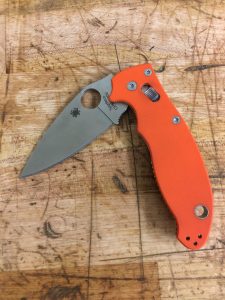 The Spyderco Manix 2 comes in quite a few variations and prices ranging from less than $100 up to $180 for a more premium version. There are quite a few versions of both regular production versions with a few sprint runs thrown in there.
The Spyderco Manix 2 comes in quite a few variations and prices ranging from less than $100 up to $180 for a more premium version. There are quite a few versions of both regular production versions with a few sprint runs thrown in there.
There are also two versions of the handle, one in FRCP (Fiberglass Reinforced Co-Polymer). FRCP is an extremely strong and tough, plastic-like material.
It provides excellent grip and is very lightweight, this version comes in at about 3 ounces which is incredibly light for a knife with a 3.375-inch blade, this is a very light knife.
The other version comes with a G10 handle. G10 is considered by most a much more “tactical” material due to it being a very tough and grippy material.
It provides excellent grip and retention even if your hands are wet, greasy, or oily. G10 is a laminate material made of epoxy and fiberglass compressed and baked to create a handle that is extremely strong, lightweight, grippy, and very low maintenance.
The manix 2 comes in different flavors
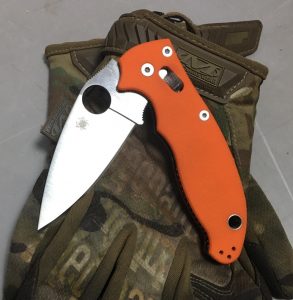 The G10 version is still quite light coming in at about 5 ounces. The Manix comes in a wide variety of steels as well. It ranges from the more budget-friendly Carpenter Steel CTS-BD1 steel to CPM S30V to Carpenter Steel Maxamet which is an extremely hard powdered tool steel designed to be used in the machining of other steels.
The G10 version is still quite light coming in at about 5 ounces. The Manix comes in a wide variety of steels as well. It ranges from the more budget-friendly Carpenter Steel CTS-BD1 steel to CPM S30V to Carpenter Steel Maxamet which is an extremely hard powdered tool steel designed to be used in the machining of other steels.
I own both the S30V and Maxamet versions and they both are excellent steels though do not count out CTS- BD1 steel it is extremely capable steel and coming in at about $90 it is a “steel” of a deal.
Another feature of the Manix that makes it an excellent choice for both an everyday carry knife (EDC), work/beater, or a tactical/military knife is its lock.
The Manix uses a ball bearing lock which is similar to Benchmade’s Axis lock-in operation. It locks with a spring that pushes a contained ball bearing into a notch in the tang of the blade allowing for an extremely strong lock up.
Spyderco manix 2 design
 Due to the design of the spring and the round shape of the bearing, it makes it possible for the lock to “self-adjust” ensuring a secure lock up even if the knife is full of debris.
Due to the design of the spring and the round shape of the bearing, it makes it possible for the lock to “self-adjust” ensuring a secure lock up even if the knife is full of debris.
The lock also allows for quick, easy deployment of the blade by just pulling the lock back and flicking your wrist.
Another advantage of the ball bearing lock is the fact that you can open and close the knife with one hand without having to put your fingers in the path of the blade when closing the knife (unlike a liner or frame lock where you have to put your thumb in the way of the closing blade to disengage the lock).
This feature makes the ball bearing lock quite safe and very attractive to those worrying about accidentally cutting themselves. All these features make this knife an excellent choice, making it a very attractive choice for a “one knife in your life” knife.
The 3.375-inch blade (roughly 2.88 inches of the actual cutting edge) is excellent for EDC tasks and more than capable at handling more abusive tasks due to Spyderco’s departure from their usual fine tip, leaf-shaped blade.
The Manix sports a more hardy drop point style leaf-shaped blade that in my opinion is a little more sturdy than their Military/Paramilitary 2/Para 3 models. The large “spydie hole” allows for easy opening with just a flick of your thumb or middle finger.
The Manix can easily and quickly flick open using the spydie hole both with and without gloves on, or you could always pull the ball bearing lock back and flick your wrist and the knife will deploy.
These features also incline the Manix 2 to be a very capable option when it comes to both EDC work/beater and tactical carry.
Awesome in hand, terrible in the pocket
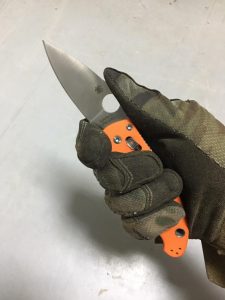 The contouring on the Manix is excellent, it fits my hands perfectly both in Mechanix gloves and barehanded. The design of the handle allows for a very secure grip, even with heavy use I have never been worried about my fingers sliding down the handle onto the blade.
The contouring on the Manix is excellent, it fits my hands perfectly both in Mechanix gloves and barehanded. The design of the handle allows for a very secure grip, even with heavy use I have never been worried about my fingers sliding down the handle onto the blade.
I have put both my G10 version and my FRCP versions through the works and through quite a bit of abuse with no signs of hotspots or the knife showing more than usual wear and tear.
On top of that, it has a great forward choil allowing you to choke up on the blade for finer work. The main issue I have with the Manix is how “tall” it is closed.
When I say how tall the knife is closed I mean the widest point from the spine of the blade to the back of the handle. On the Manix it is quite wide measuring at around 1.5 inches in width, this causes it to be very large in the pocket.
What I don’t like about the manix 2
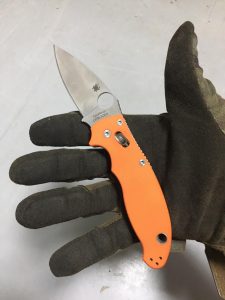 It will take up a lot of space in your pocket making it difficult to fit other things or your hand in the same pocket as your Manix 2. For me, this is kind of a non-issue due to the fact that I carry my knife in my front right pocket and that is the only thing I carry in that pocket.
It will take up a lot of space in your pocket making it difficult to fit other things or your hand in the same pocket as your Manix 2. For me, this is kind of a non-issue due to the fact that I carry my knife in my front right pocket and that is the only thing I carry in that pocket.
Part of this is because I have quite a few open back knives that I don’t want keys, coins, or debris getting in the and damaging the edge of my blade.
Also, I believe that if you need to get your knife out quickly no matter what the situation you’re in, even everyday uses, you don’t want to be struggling to untangle your knife from your cell phone or your keys as you’re trying to extract it from your pocket.
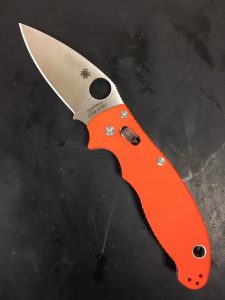 Specifications
Specifications
Final Thoughts
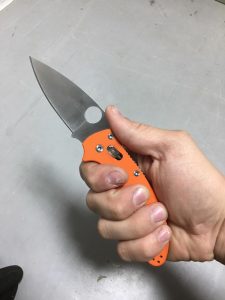 Overall there are a few features that I believe make the Manix 2 an excellent choice for both everyday carry/work/tactical/heavy duty use knife.
Overall there are a few features that I believe make the Manix 2 an excellent choice for both everyday carry/work/tactical/heavy duty use knife.
These features are; an excellent handle providing superior ergonomics and retention, a very useful leaf-shaped, drop point blade that allows for both tip strength as well as a superior piercing tip.
All this while sporting a very well designed forward choil allowing for fine detailed/piercing work, a very strong locking mechanism allowing for heavy use without fear or the lock failing under duress and causing injury.
Lastly, Spyderco managed to create a knife the is 8 inches overall with a 3.375-inch blade but still weighs a mere 3 ounces for the FRCP version and 5 ounces for the G10 version which is still incredibly light for a knife this size. This is an excellent choice if you only want to buy one knife that can handle a wide variety of tasks.

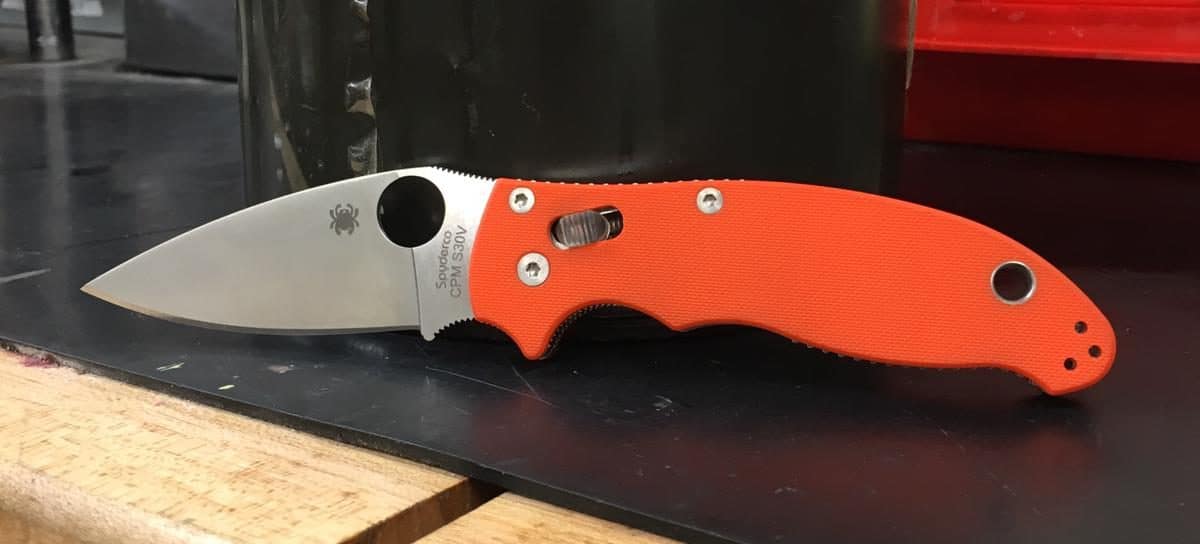
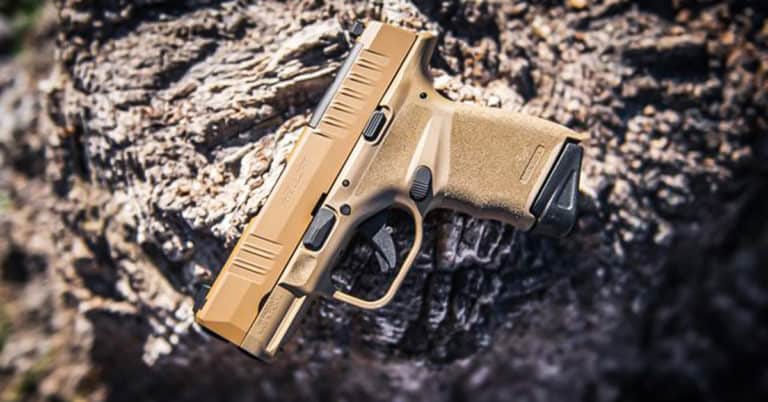
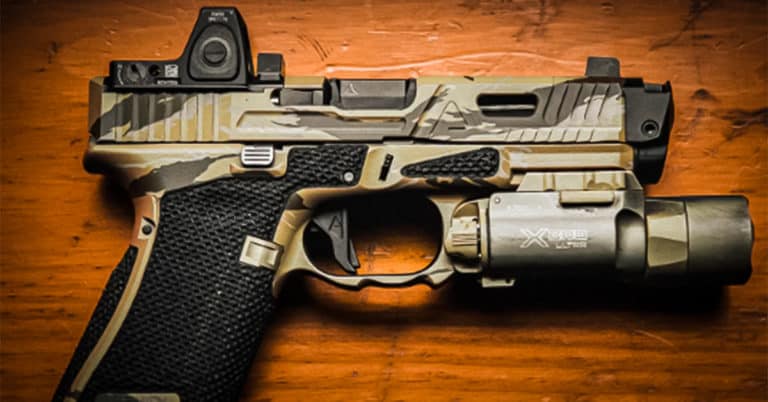
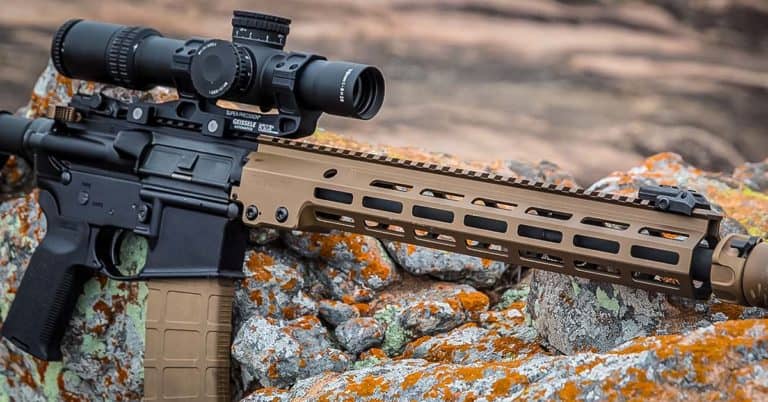

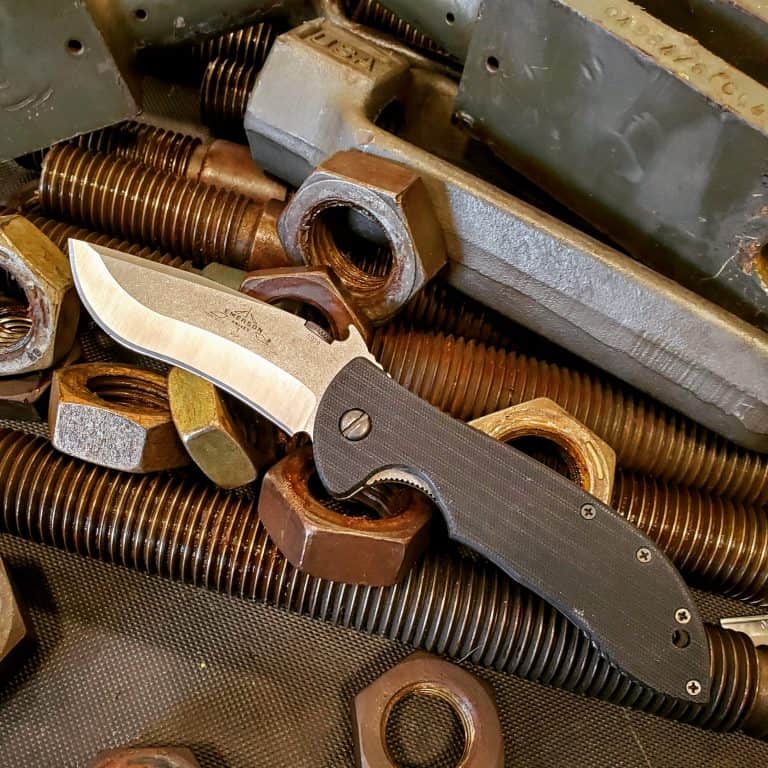
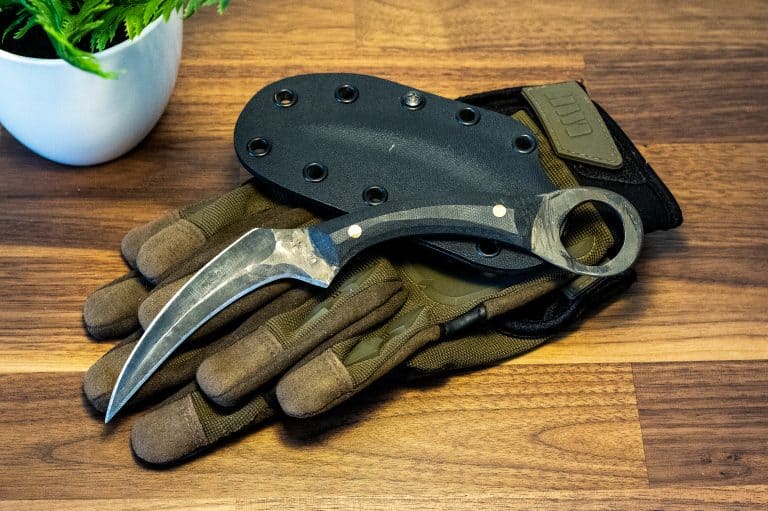
Similar to the Spyderco Tenacious, the Manix 2 utilizes steel-liners within its G10 handles. G10 alone is a high-quality composite material; its toughness and durability compared to its alternatives are why it s my preferred handle material. The texture of the G10 combined with the ergonomics of the Manix 2 makes it an exceptional handle that lacks nothing else. The steel-liners are merely there to reinforce the G10 handle. Some might call it overkill, and I might feel inclined to agree, but only because I try to keep all my gear lightweight. However, you can rest assured that this handle is as sturdy as it gets, and it won’t break unless you’re actually attempting to break it. Despite a hefty overall weight at 4.9 oz, I don’t mind it as my EDC knife, but I might opt for a lighter knife when I’m doing some extensive hiking or backpacking since those ounces add up very quickly.